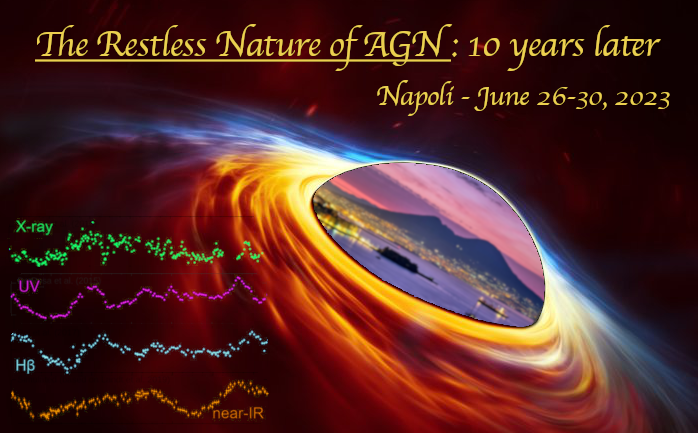Dr.
Marina Pavlovć
(Mathematical institute Serbian Academy of Sciences and Arts)
Here we study the variability of quasar light curves found in the LSST AGN Data Challenge (LSST_AGN_DC), a dataset compiled from various catalogs for testing key aspects of active galactic nuclei (AGN) science with the Rubin Observatory Legacy Survey of Space and Time (LSST). The distributions of quasar parameters in large databases may show bimodality or multimodality, thus as preprocessing step it is necessary to cluster light curves according to their local topology.
For clustering quasar light curves we applied Self-Organizing Map (SOM). These clustered light curves were analysed by standard and modified structure functions. Inferred variability properties were checked on modeled light curves using a conditional neural process.
We detected 36 clusters of quasar light curves, each containing light curves of specific topology. The structure function analysis showed that each cluster has specific variability characteristics. For example, we detected one cluster of 300 quasars with low-variable light curves, which could be consistent with microlensing events on a long temporal time scale. Importantly, modeling light curves with the conditional neural process does not alternate variability characteristics of light curves , and it can be a vital tool for studying large datasets containing a significant population of microlensed quasars.
Dr.
Marina Pavlovć
(Mathematical institute Serbian Academy of Sciences and Arts)
Dr.
Andjelka Kovačević
(Department of Astronomy, Faculty of Mathematics, University of Belgrade, Studentski trg 16, 11000 Belgrade, Serbia, PIFI Research Fellow, Key Laboratory for Particle Astrophysics, Institute of High Energy Physics, Chinese Academy of Sciences,19B Yuquan Road, 100049 Beijing, China)
Dr.
Dragana Ilić
(Department of Astronomy, Faculty of Mathematics, University of Belgrade, Humboldt Research Fellow, Hamburger Sternwarte, Universitat Hamburg)
Dr.
Luka Popović
(Astronomical Observatory, Volgina 7, 11000 Belgrade, Serbia, Department of Astronomy, Faculty of Mathematics, University of Belgrade, PIFI Research Fellow, Key Laboratory for Particle Astrophysics, Institute of High Energy Physics, Chinese Academy of Sciences)
Nikola Andrić Mitrović
(Department of Astronomy, Faculty of Mathematics, University of Belgrade)
Dr.
Mladen Nikolić
(Department of Astronomy, Faculty of Mathematics, University of Belgrade)
Iva Čvorović-Hajdinjak
(Department of Astronomy, Faculty of Mathematics, University of Belgrade)
Dr.
Miljan Knežević
(Department of Astronomy, Faculty of Mathematics, University of Belgrade)
Djordje Savić
(Astronomical Observatory, Volgina 7, 11000 Belgrade, Serbia, Institut d’Astrophysique et de Géophysique, Université de Liège, Allée du 6 Août 19c, 4000 Liège, Belgium)

